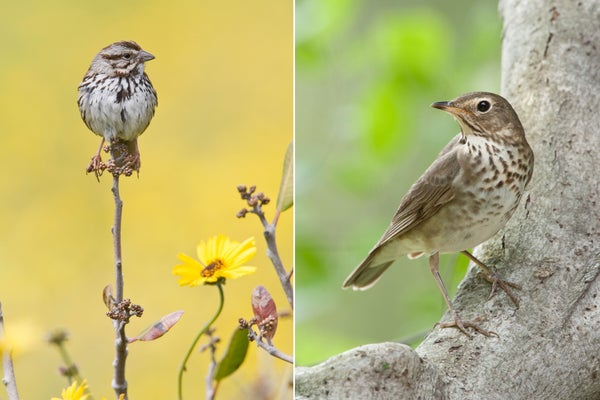Shahla Farzan: This is Scientific American’s 60-Second Science. I’m Shahla Farzan.
Climate change is affecting animals in a lot of different ways. But scientists have noticed a common trend across a variety of species: they’re getting smaller. As in—physically smaller in size. But why, and what could this mean?
Scientists have observed this phenomenon in very different animal species from wild sheep to woodrats. But it’s especially well-documented in North American songbirds.
On supporting science journalism
If you're enjoying this article, consider supporting our award-winning journalism by subscribing. By purchasing a subscription you are helping to ensure the future of impactful stories about the discoveries and ideas shaping our world today.
In 2019, researchers at the University of Michigan published a dataset of more than 70,000 birds that died after hitting windows in Chicago. The data showed the body sizes for dozens of species had actually shrunk over the past 40 years.
But when Justin Baldwin, a graduate student at Washington University in St. Louis, took a closer look at the data … something stood out. [Justin W. Baldwin et al., Phenotypic responses to climate change are significantly dampened in big-brained birds]
Justin Baldwin: There clearly seem to be some species that were shrinking a lot and other species that were shrinking much less.
Farzan: The question was … why were some bird species shrinking faster than others?
Baldwin and his colleagues had a feeling that bird behavior might be playing a role.
In birds, species with bigger brains tend to be smarter and can change their behavior based on their environment. That means that they might be able to buffer themselves from increasing temperatures, says Carlos Botero, an assistant professor of biology at Washington University and the study’s co-author.
Carlos Botero: By adjusting their behavior, by changing the places that they look for food, the times of the day in which they do that, the things that they eat, and the ways in which they access those food sources. All those are ways in which they could experience a little bit less of a negative selection from all this variety of changes that we're seeing through climate change.
Farzan: A bigger-brained bird, for example, might adjust its behavior and stay in the shadows when it’s hot.
So the team decided to reanalyze that massive, original dataset—but this time, factor in brain size.
They found birds with larger brains in relation to their body size are shrinking at slower rates than birds with smaller brains.
And that was true even after controlling for other factors that could affect how quickly these birds are evolving, like generation time and mutation rate.
But Botero says, just because these larger-brained bird species can temporarily buffer themselves from warmer temperatures … it doesn’t mean they’re completely protected from climate change.
Botero: It is important to realize that what we see here is not an indication that big brain birds are fine, and that they are not having any problems or that they are just capable to take whatever kind of change is coming from this suite of different environmental phenomena that is happening right now.
Farzan: Still, the team says there’s still a lot to learn when it comes to the ways in which bird behavior could affect how these species respond to climate change.
For one thing, in this study, there was only about a twofold difference in relative brain size between the species with the largest brain—the song sparrow—and the one with the smallest—the Swainson’s Thrush.
That means the responses could be even stronger in birds with larger brains, like crows, Baldwin says.
Baldwin: We're sampling only a small amount of the potential variation in relative brain size here in our study. And so that does suggest that even potentially small differences in relative brain size might actually have a large effect on ecological responses to climate change.
Farzan: For now, Baldwin says, one of their biggest takeaways is that smaller-brained bird species could be particularly vulnerable as the climate continues to change.
For Scientific American’s 60-Second Science, I’m Shahla Farzan.
[The above text is a transcript of this podcast.]

